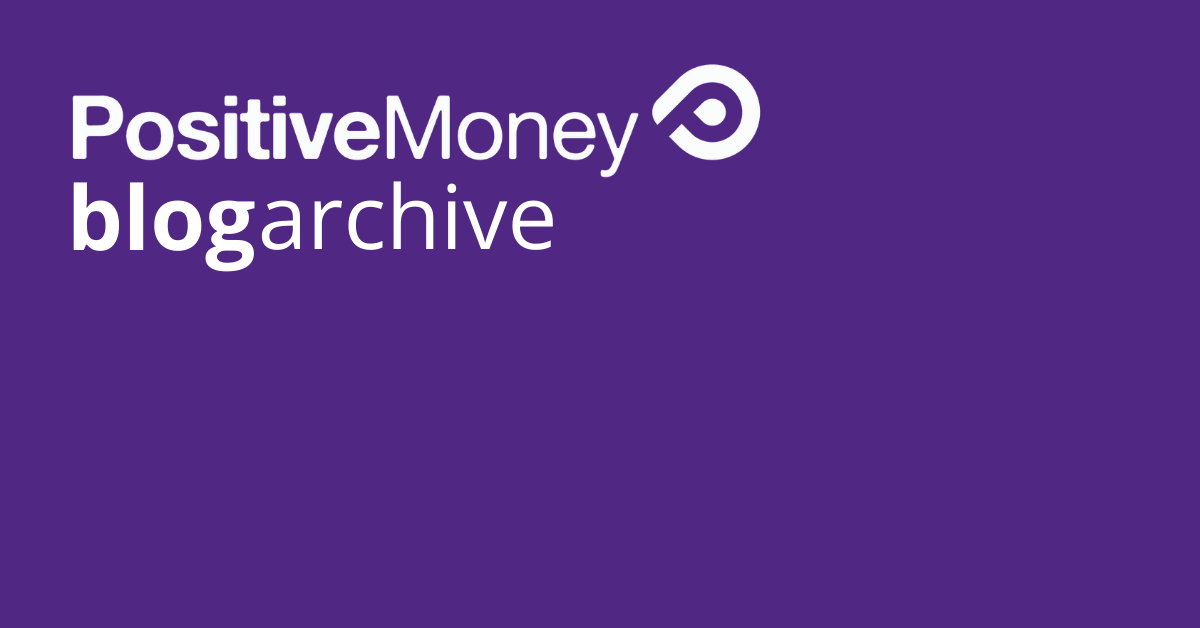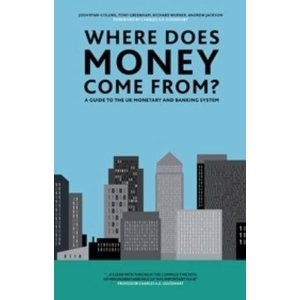Where does money come from? – New extended edition

Second edition of the guide to the workings of the UK banking and monetary system – Where Does Money Come From? – is out now!
Josh Ryan-Collins, senior researcher at new economics foundation and co-author of the book writes in an article The big questions on money and banking we should all be asking:

As we release the second edition of our Where Does Money Come From? book, there are signs our messages on money creation may be getting through.
Private banks monopolise the creation and allocation of money in most modern economies, including the UK’s. This simple fact has been consistently ignored by policy makers and economists in all those banking reforms proposed and implemented since the financial crisis.
For this reason we published a comprehensive guide to the workings of the UK banking and monetary system: Where Does Money Come From? Since its release last autumn, the first edition has sold thousands of copies and been included in university courses, even as a core text on a City University undergraduate economics course. We have also received positive feedback from regulators and policy makers, such as the Bank of England’s David Miles:
“Refreshing and clear. The way monetary economics and banking is taught in many – maybe most – universities is very misleading and this book helps people explain how the mechanics of the system work.”
Four years after the beginning of the crisis, there are signs nef’s message may be getting through. Questions are being asked at the highest levels about the whether un-regulated fractional-reserve banking can ever be the basis of a stable and sustainable financial infrastructure, a key argument that runs through WDMCF. Last month in a speech to the South African Central Bank, Lord Adair Turner, Chairman of the Financial Services Authority, argued that:
“The financial crisis of 2007/08 occurred because we failed to constrain the private financial system’s creation of private credit and money…the existence of banks as we know them today – fractional reserve banks – exacerbates these risks because banks can create credit and private money, and unless controlled, will tend to create sub-optimally large or sub-optimally unstable quantities of both credit and private money.”
Turner’s speech comes just a month after a working paper by the International Monetary Fund (IMF) similarly concluded the current monetary system was inherently unstable. The paper proposes instead a government controlled ‘full-reserve’ system, as nef did to the Vickers Commission in Spring of last year. Michael Kumhof, one of the author’s, presented the findings at a nef� seminar at the London School of Economics last month and showed how, using the IMF’s latest modeling, such a system could wipe out US debt and lead to significant increases in growth, reduction in unemployment and long term stability.
It would appear that the momentum towards a much more fundamental reassessment of the basic structures of our monetary system is building.
It includes brand new sections on Quantitative Easing (QE), The LIBOR scandal, The European Sovereign Debt Crisis and also a new concluding section which lays out some alternative options for how money could be created and allocated in a less ‘sub-optimal’ manner. The second edition is in hard-back but at the same price as the original and nef will also be making it available in an e-version next year.
You can buy the book here.